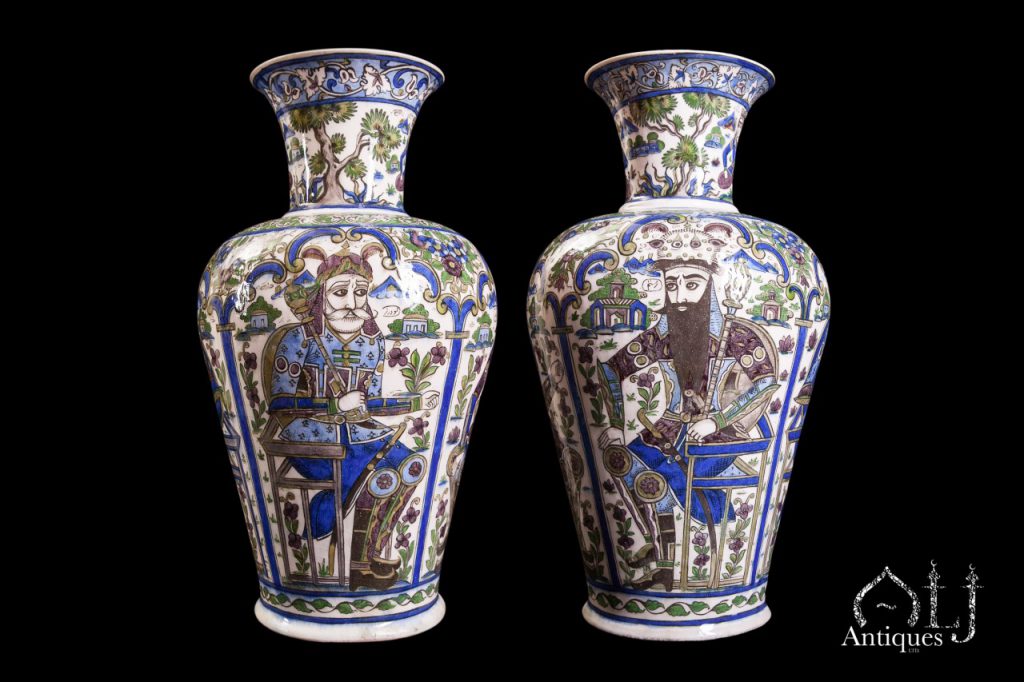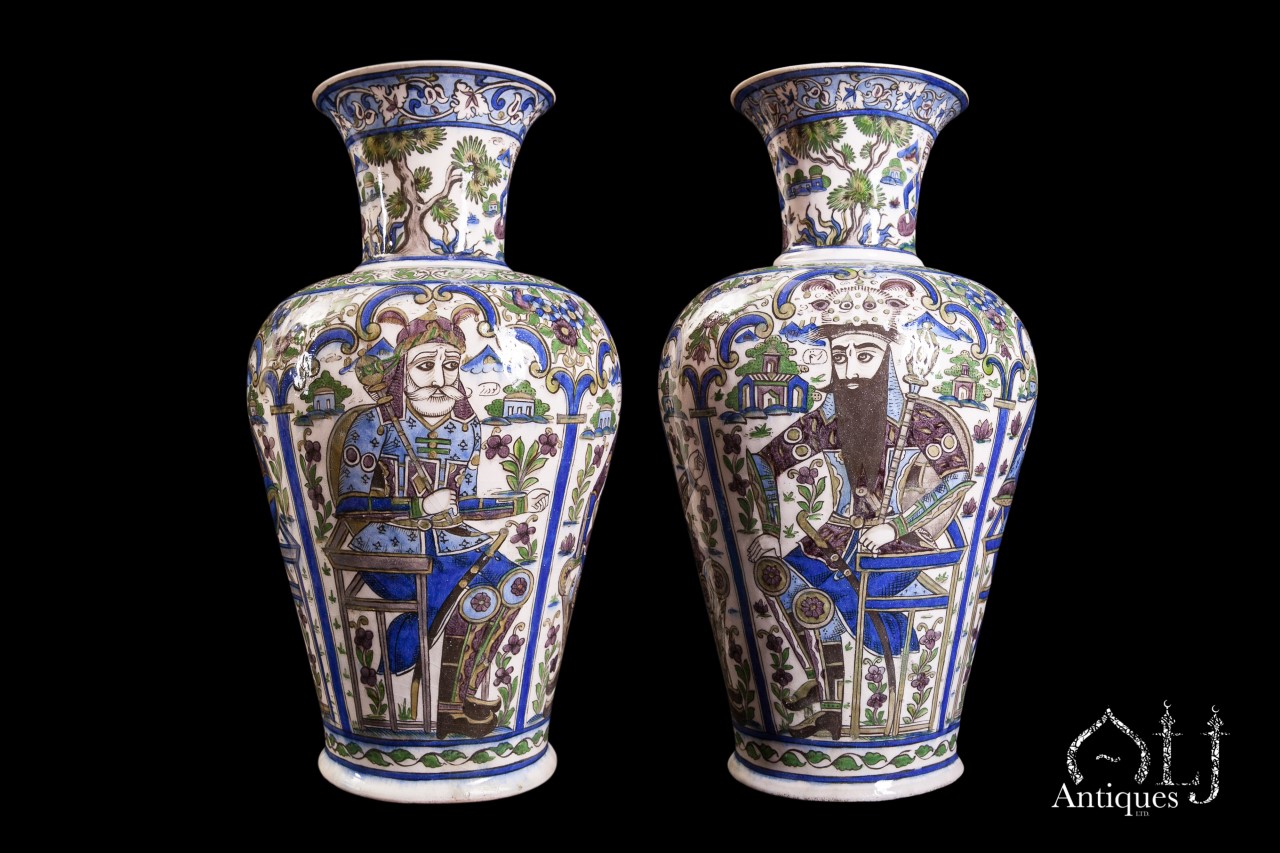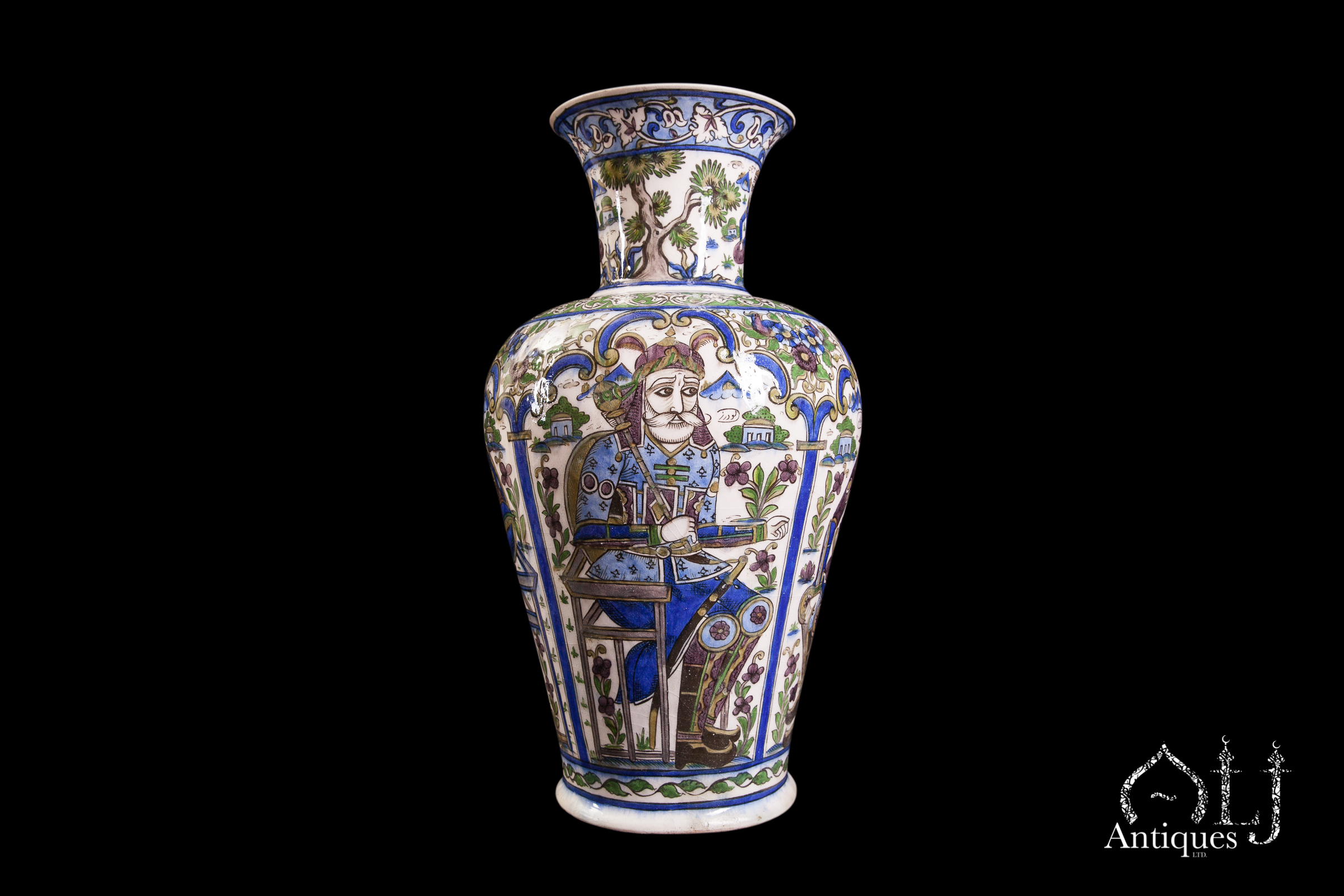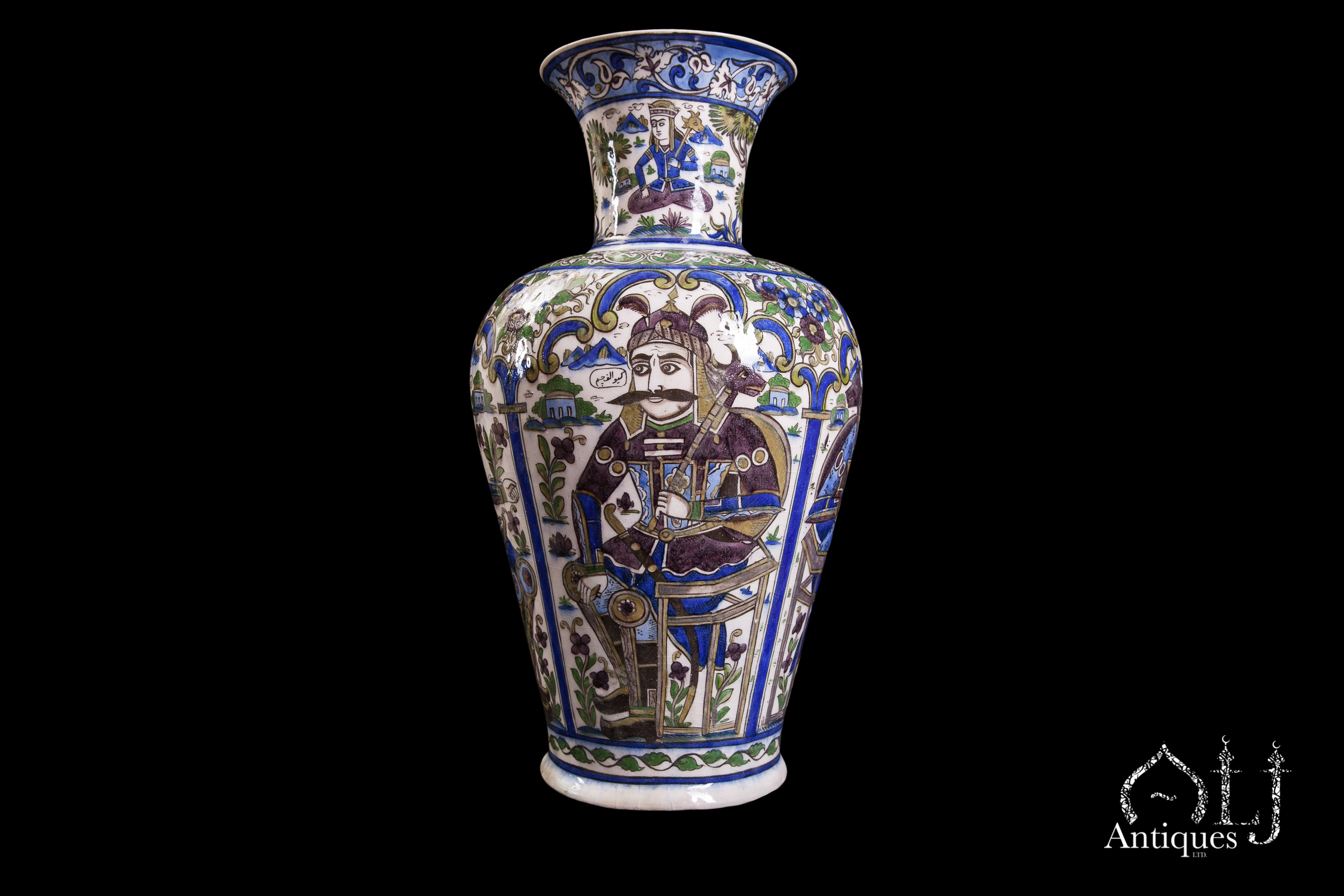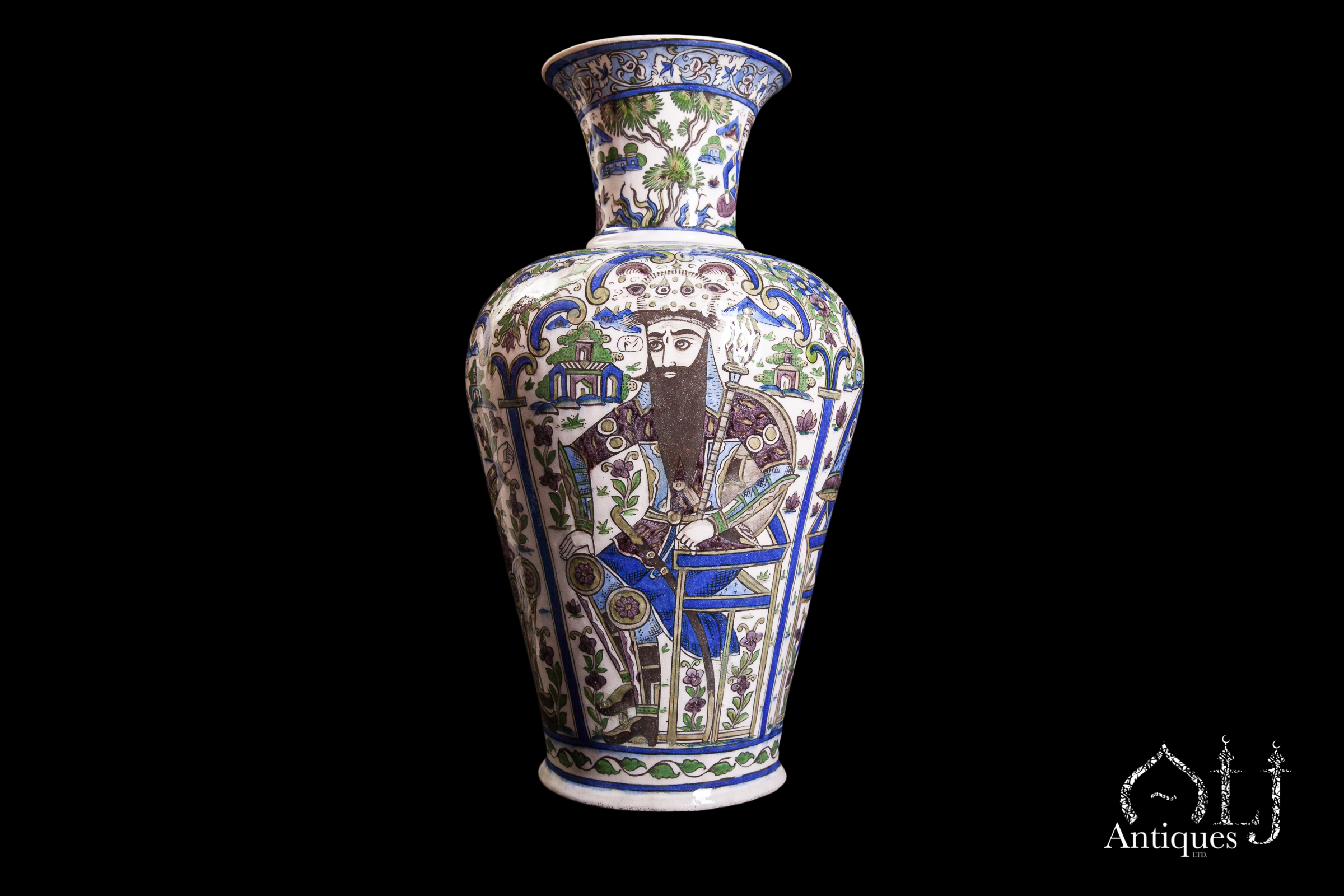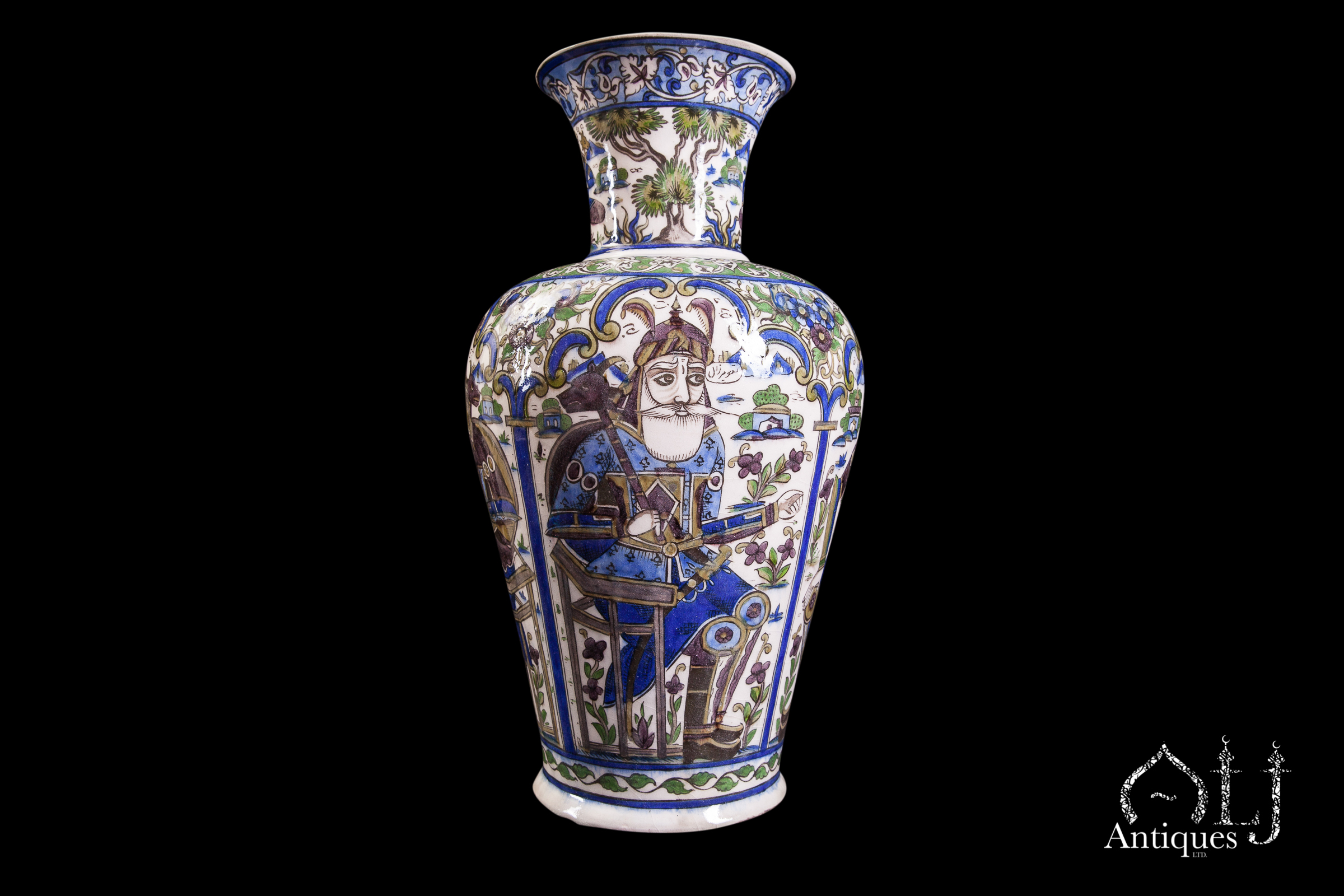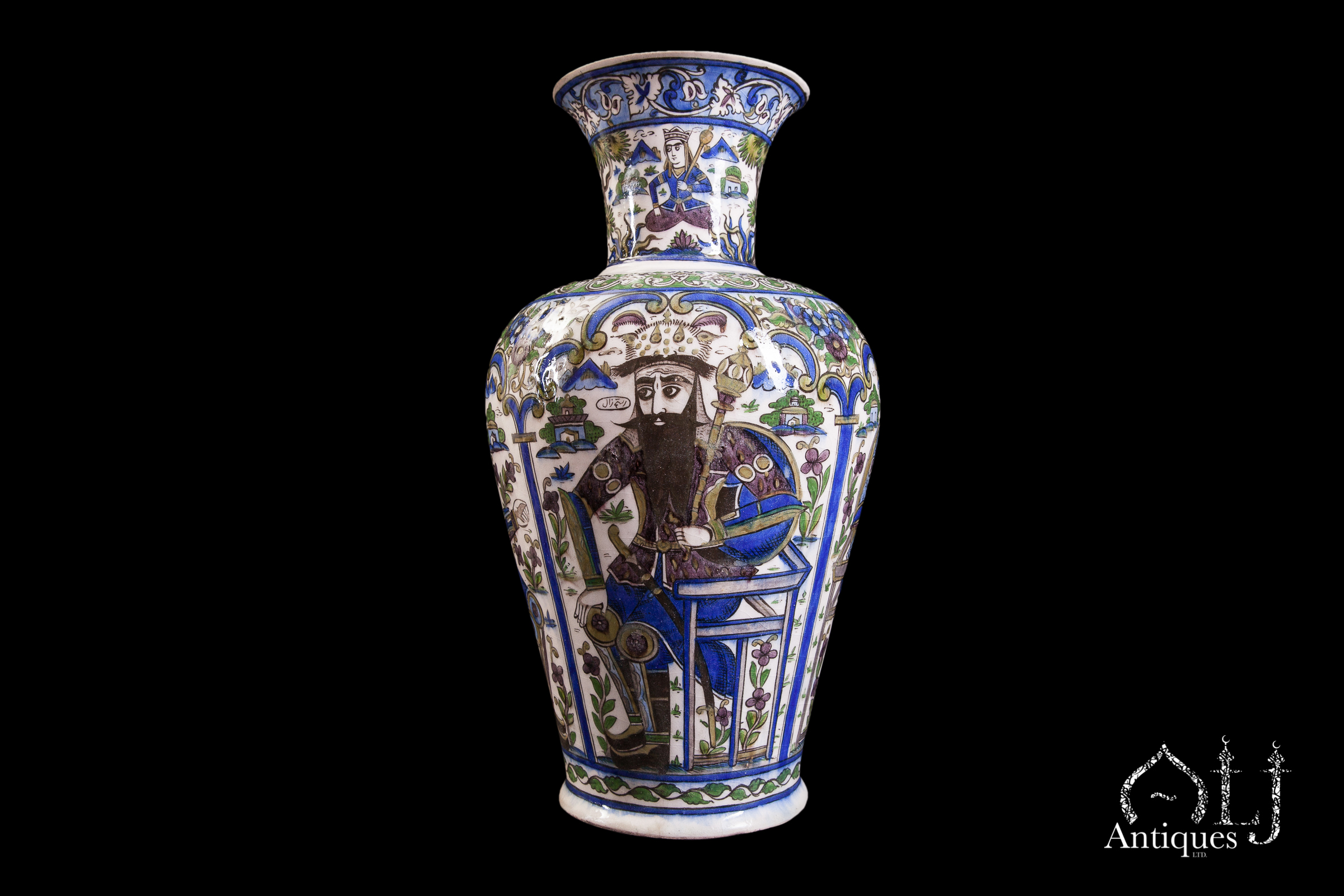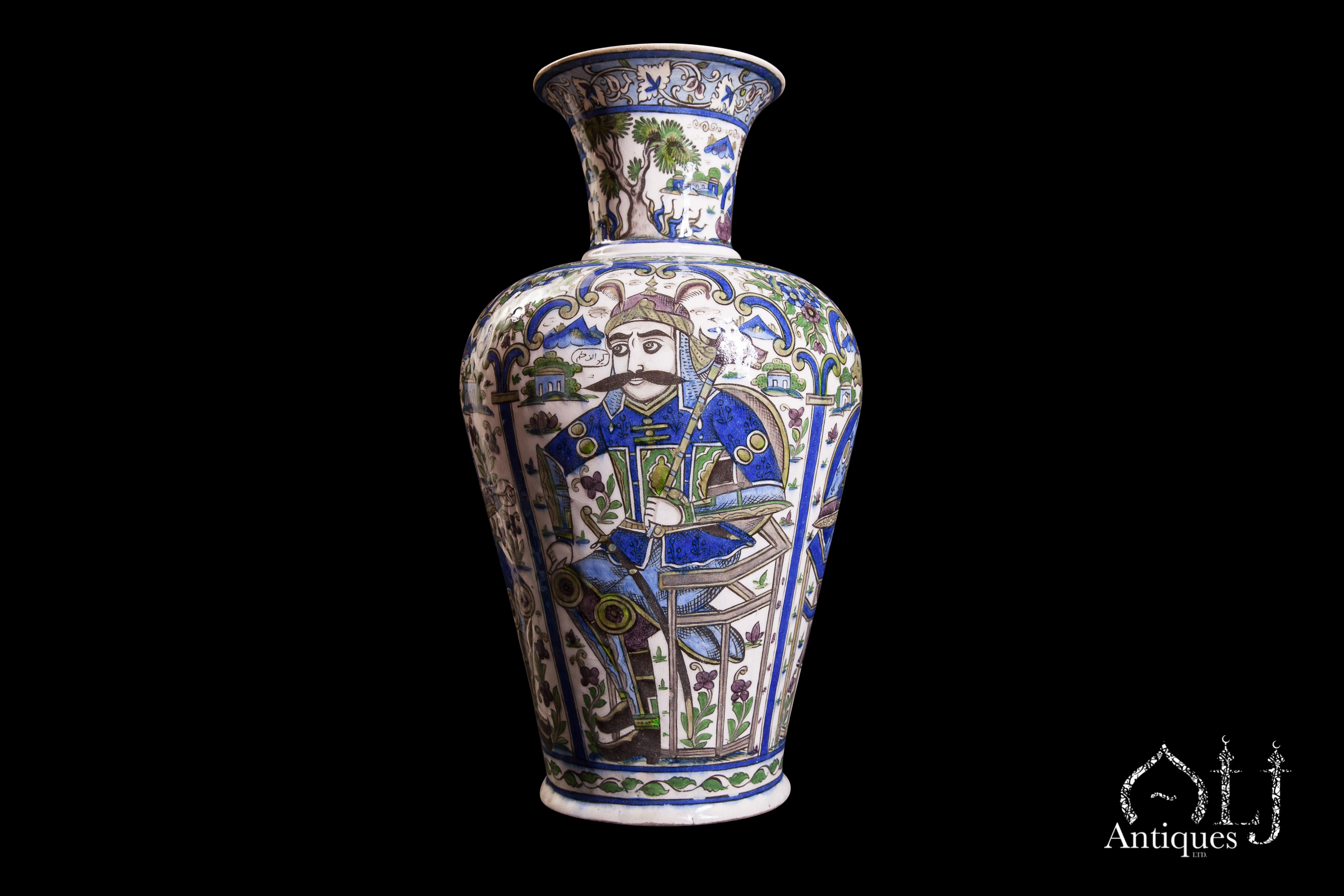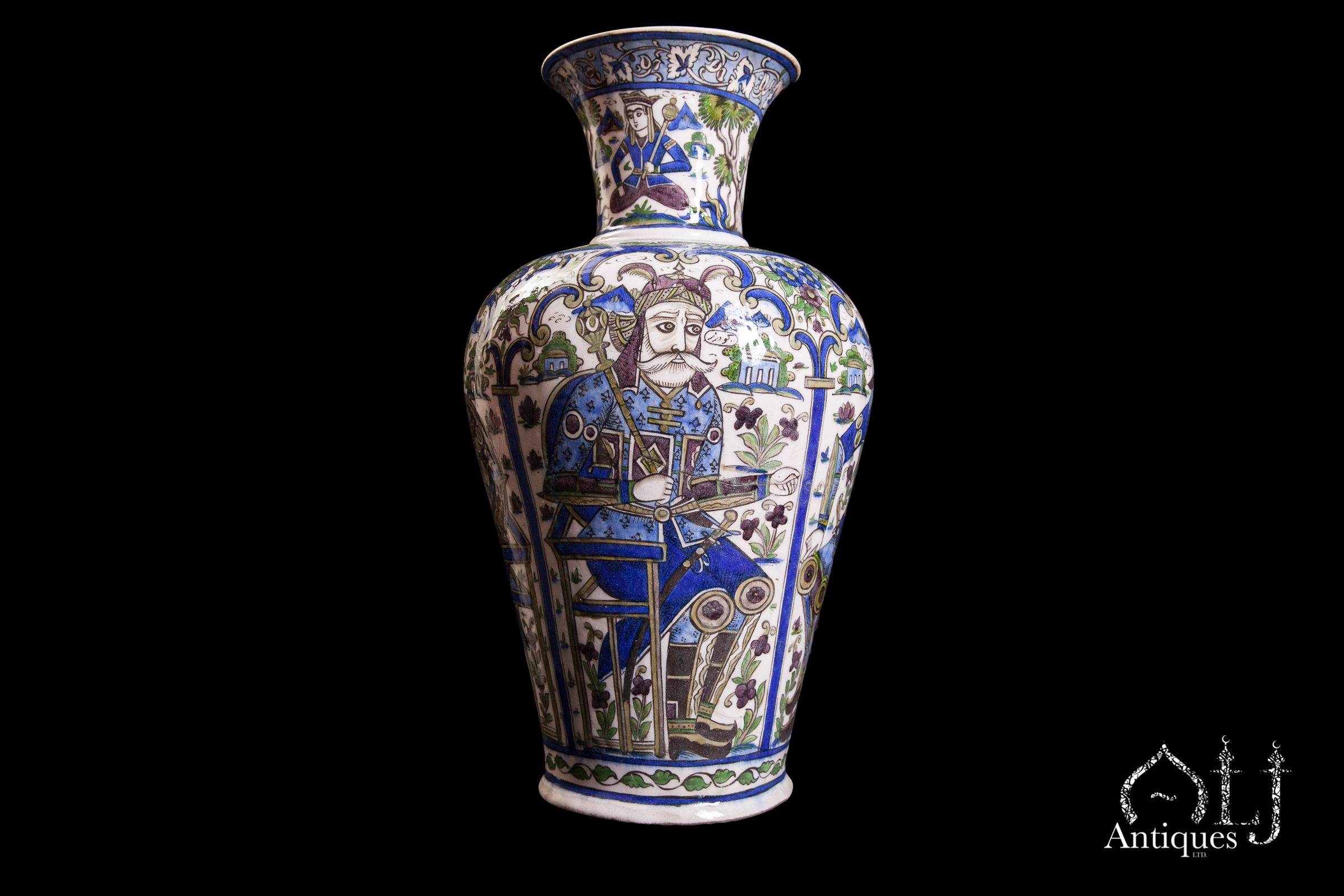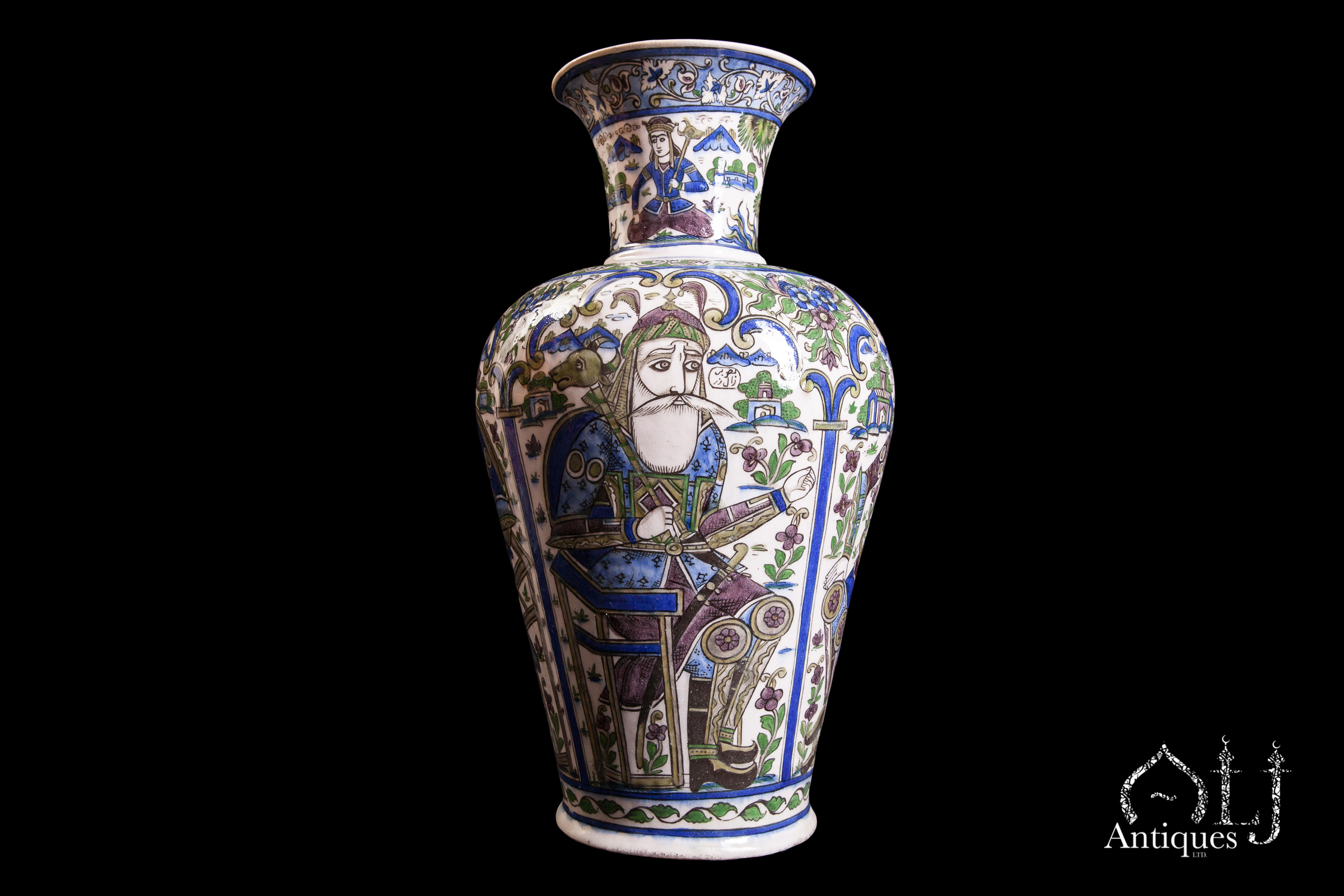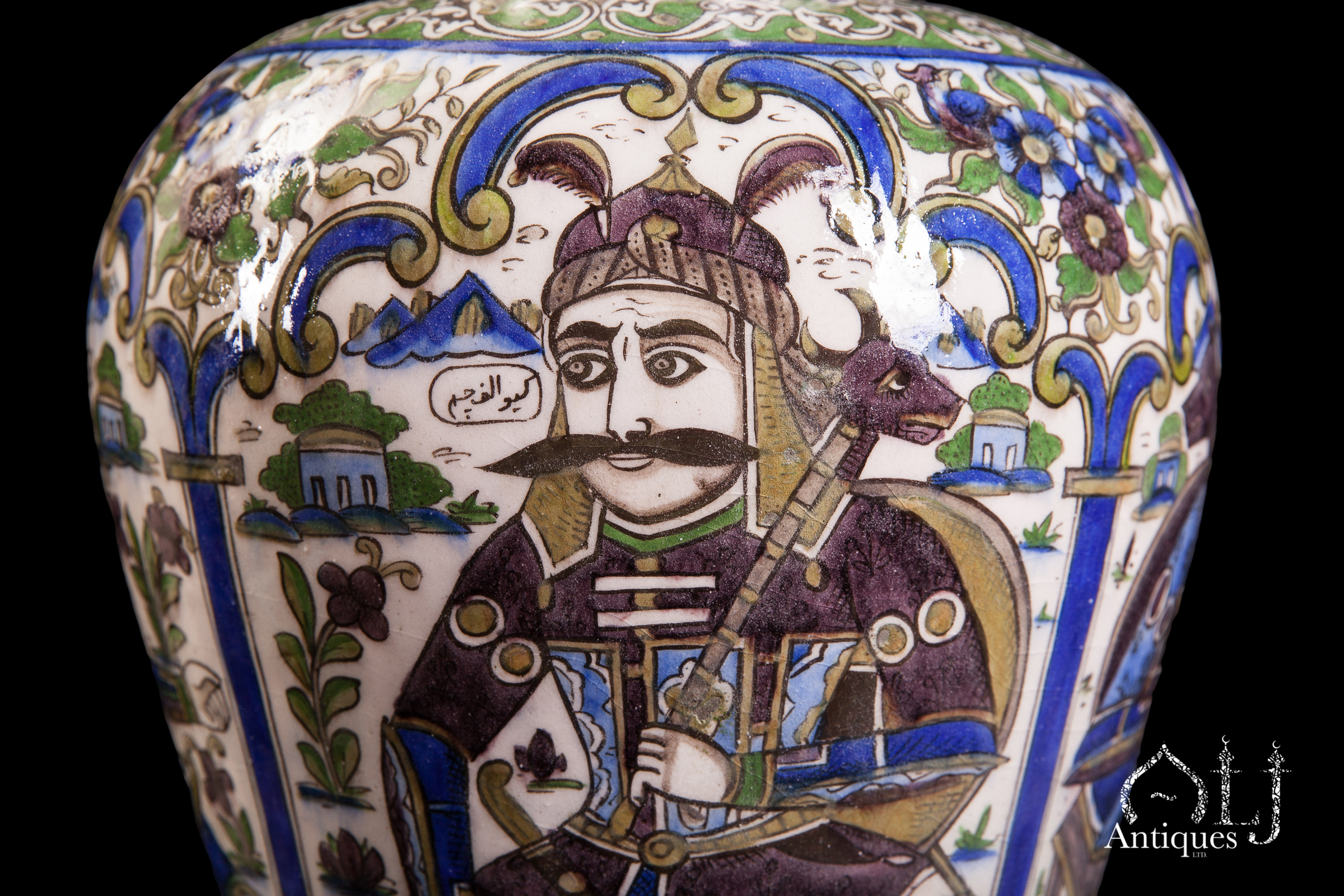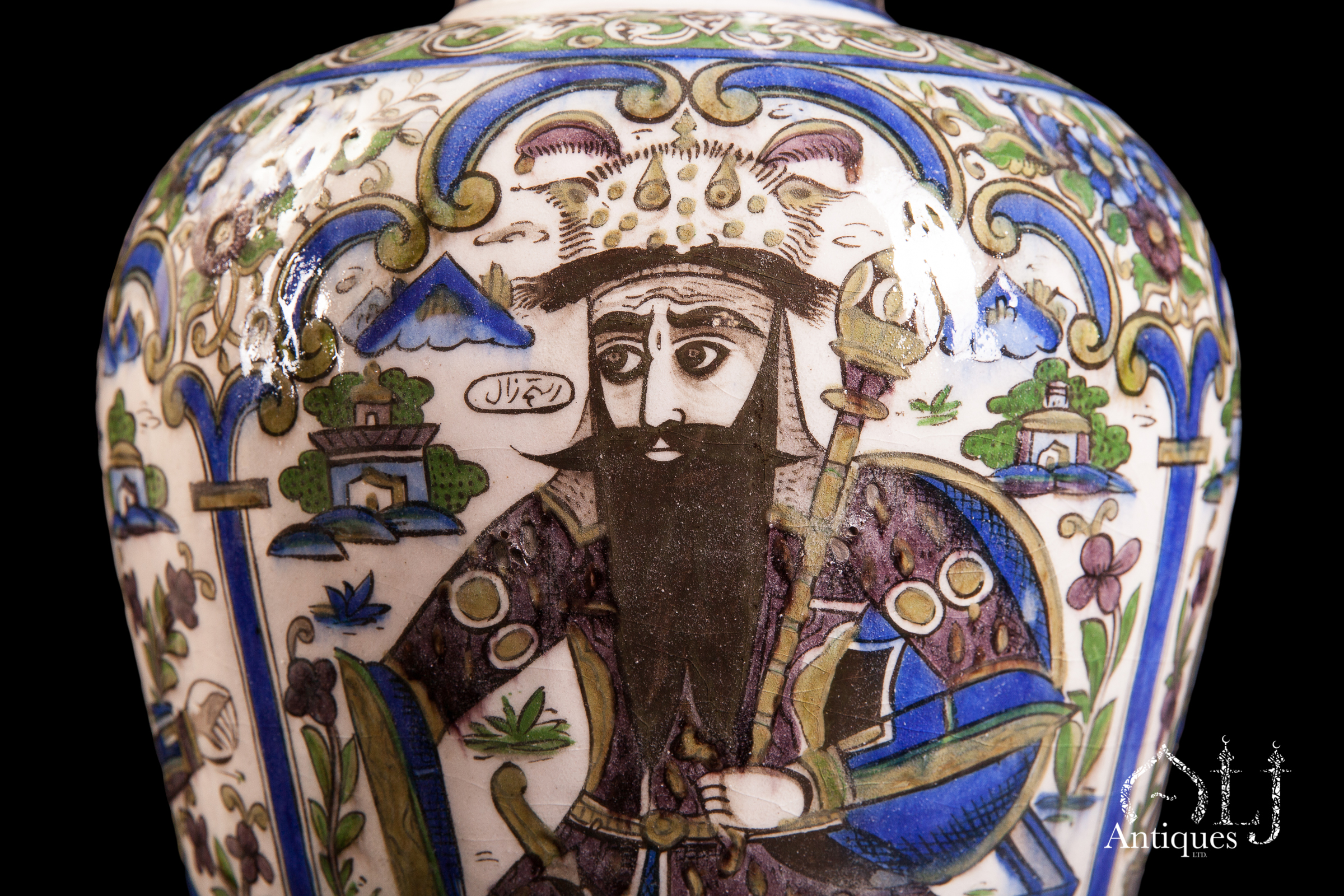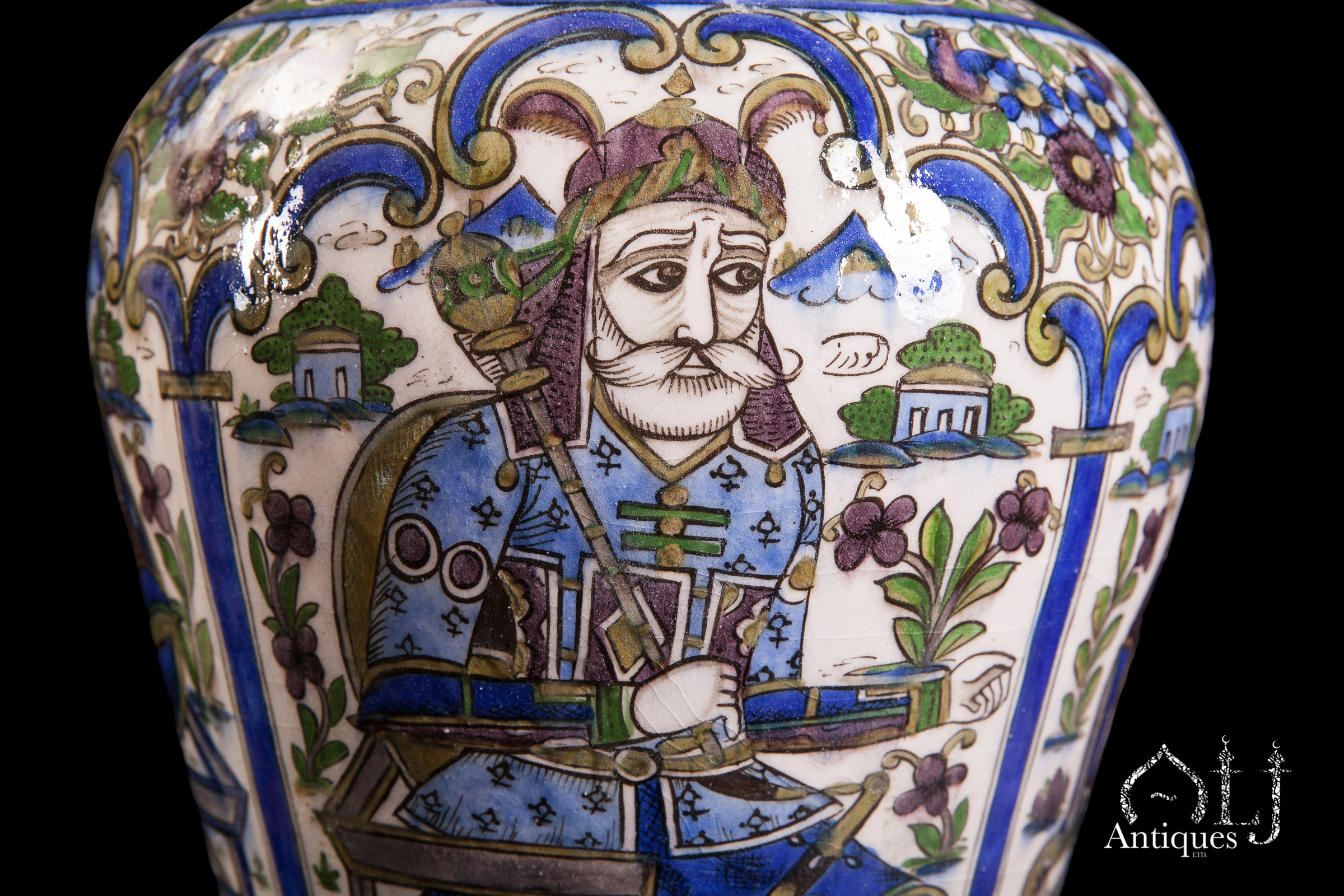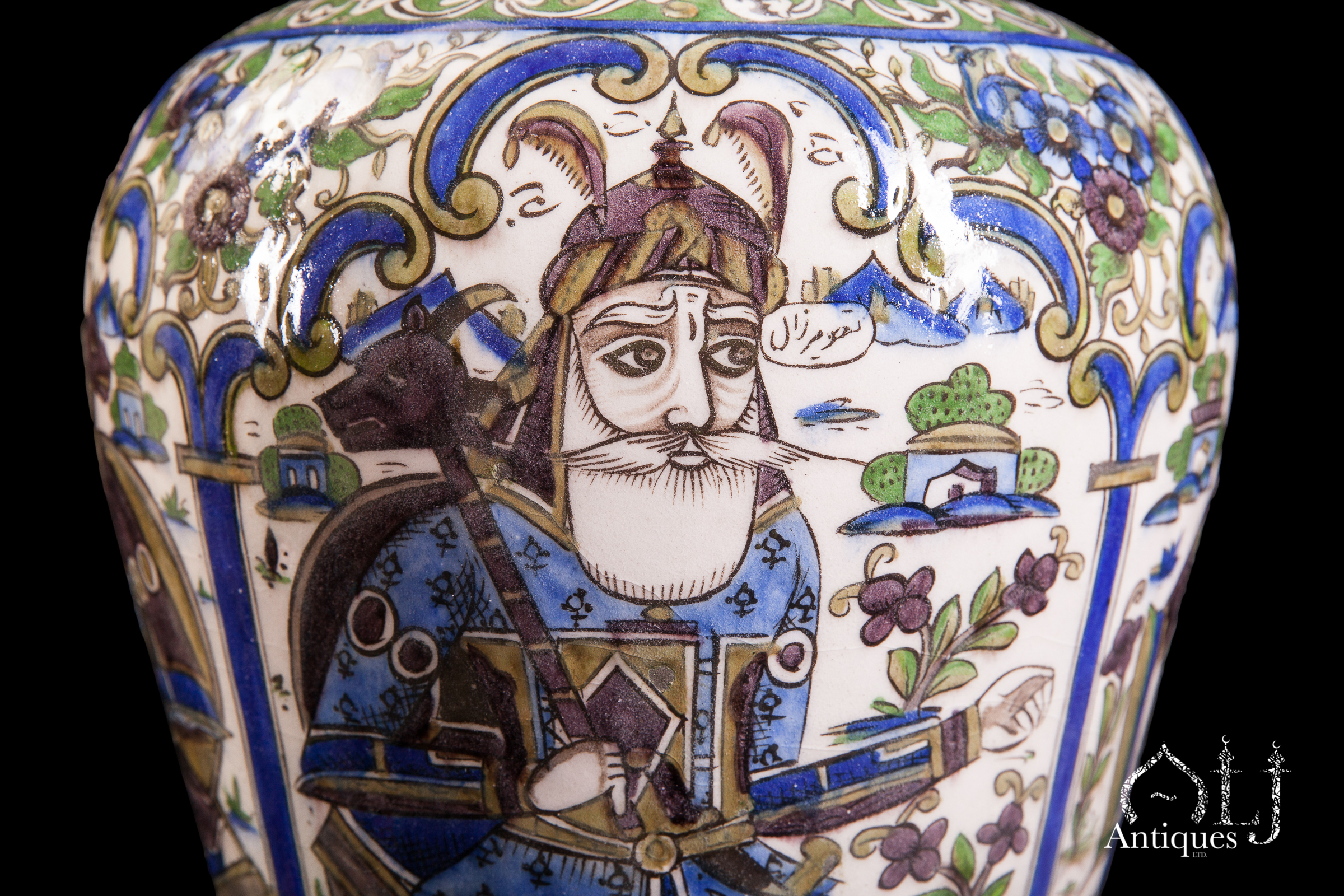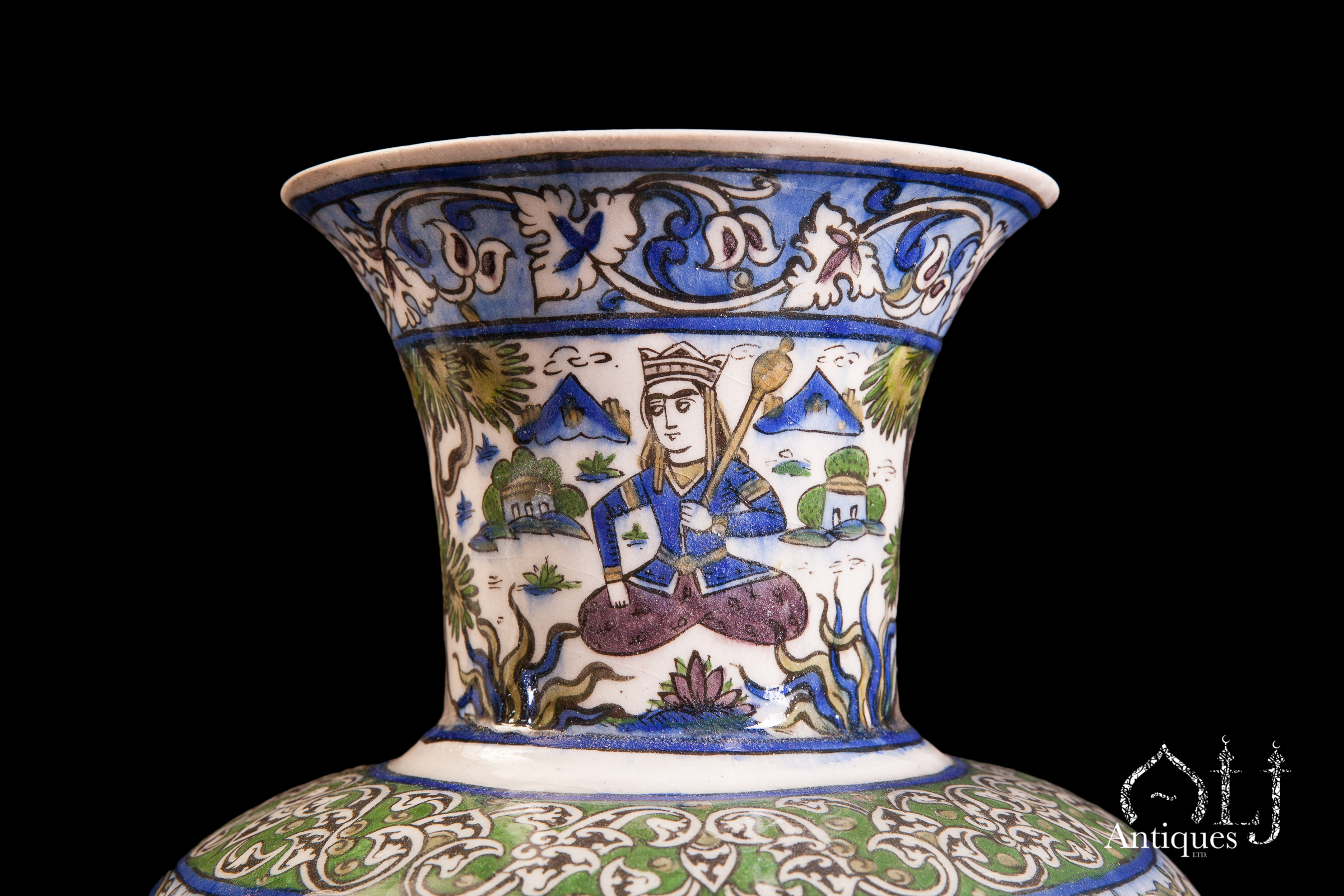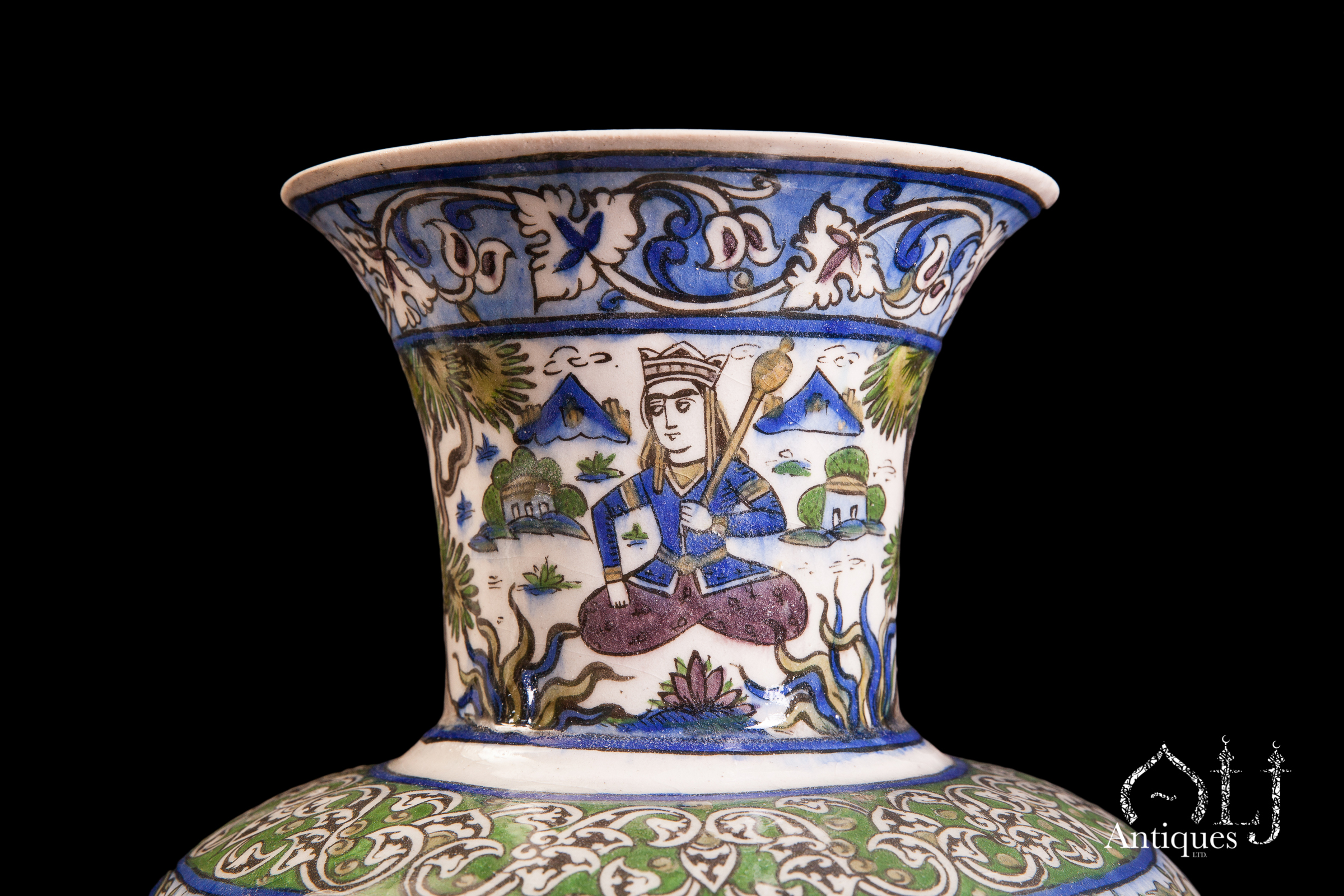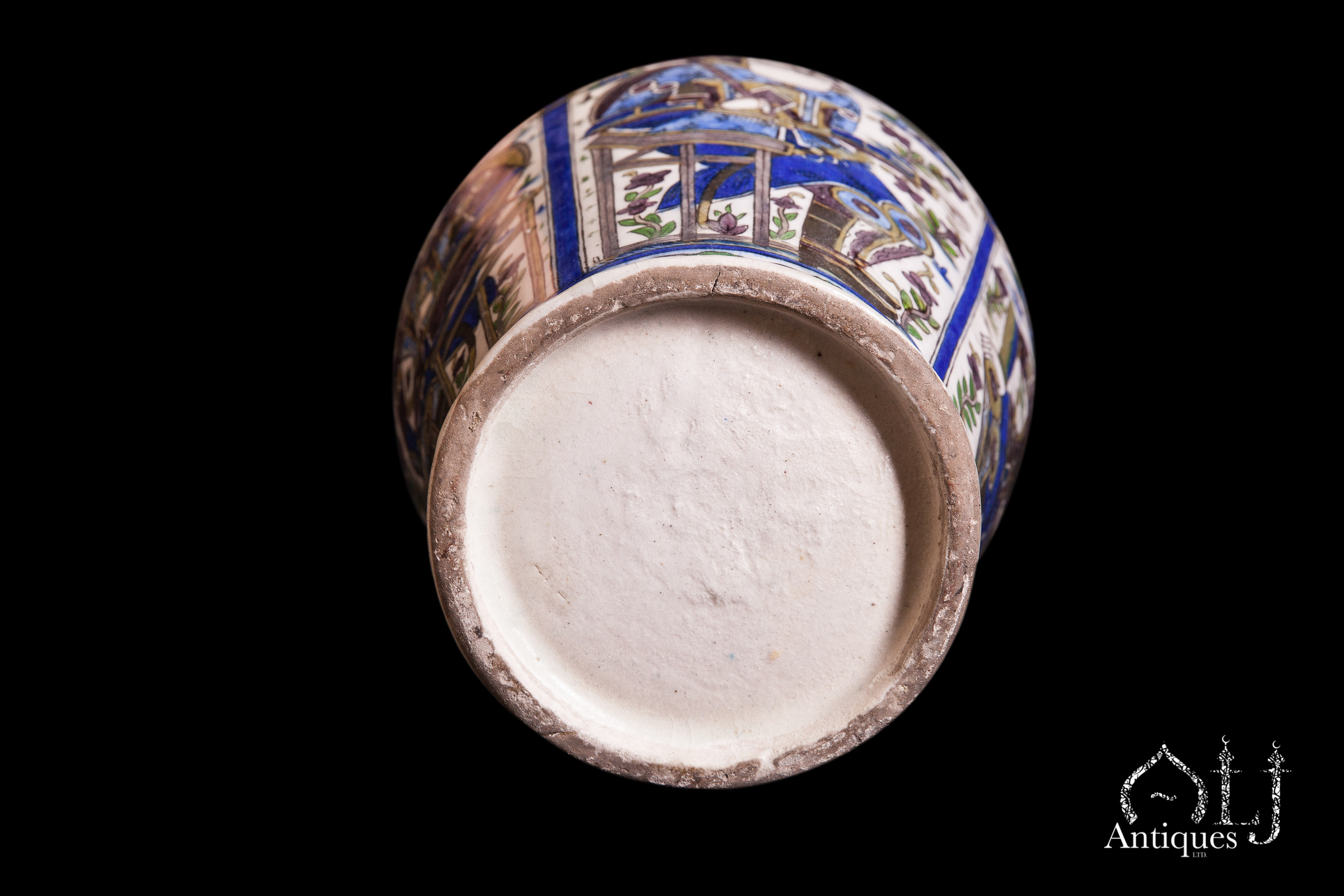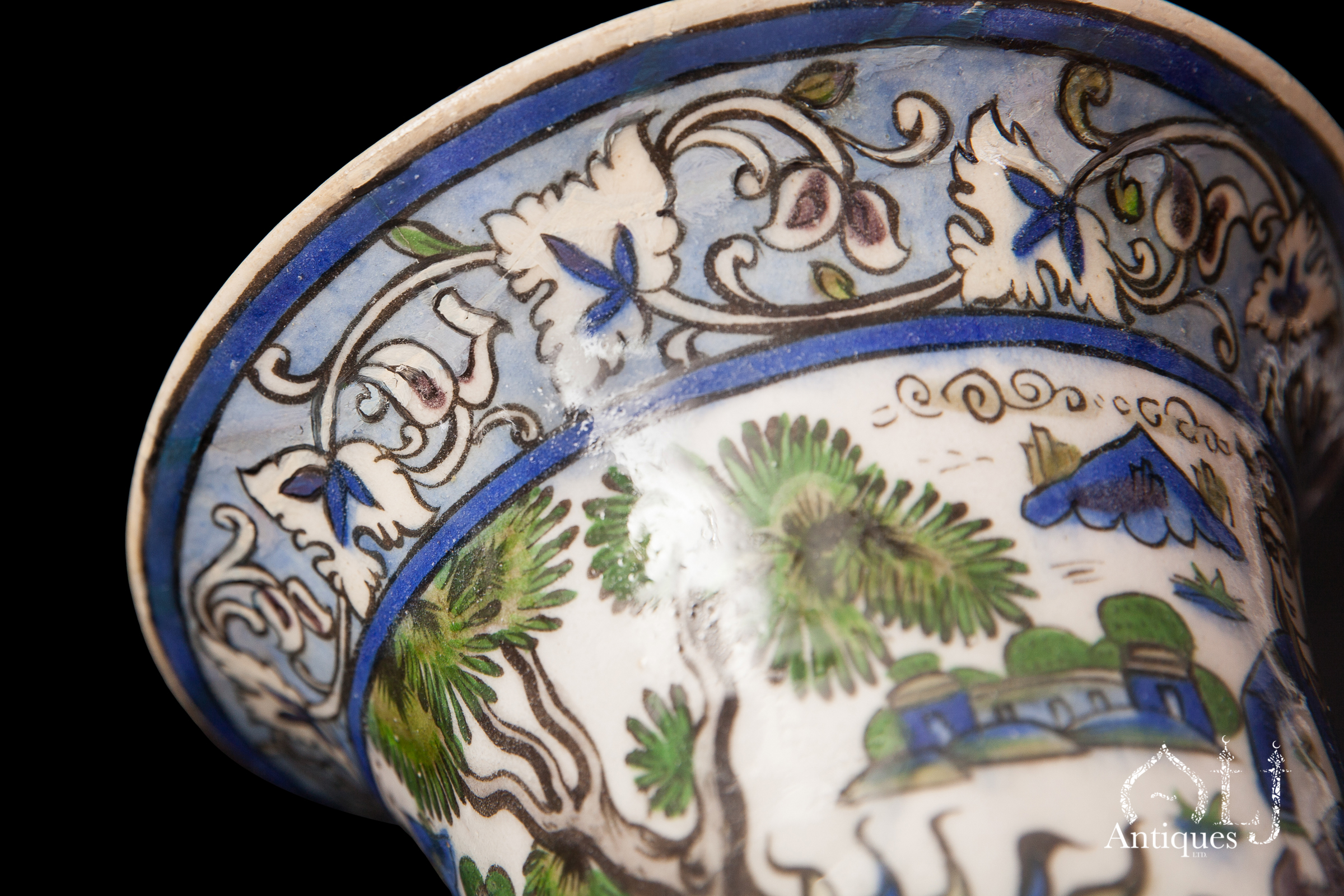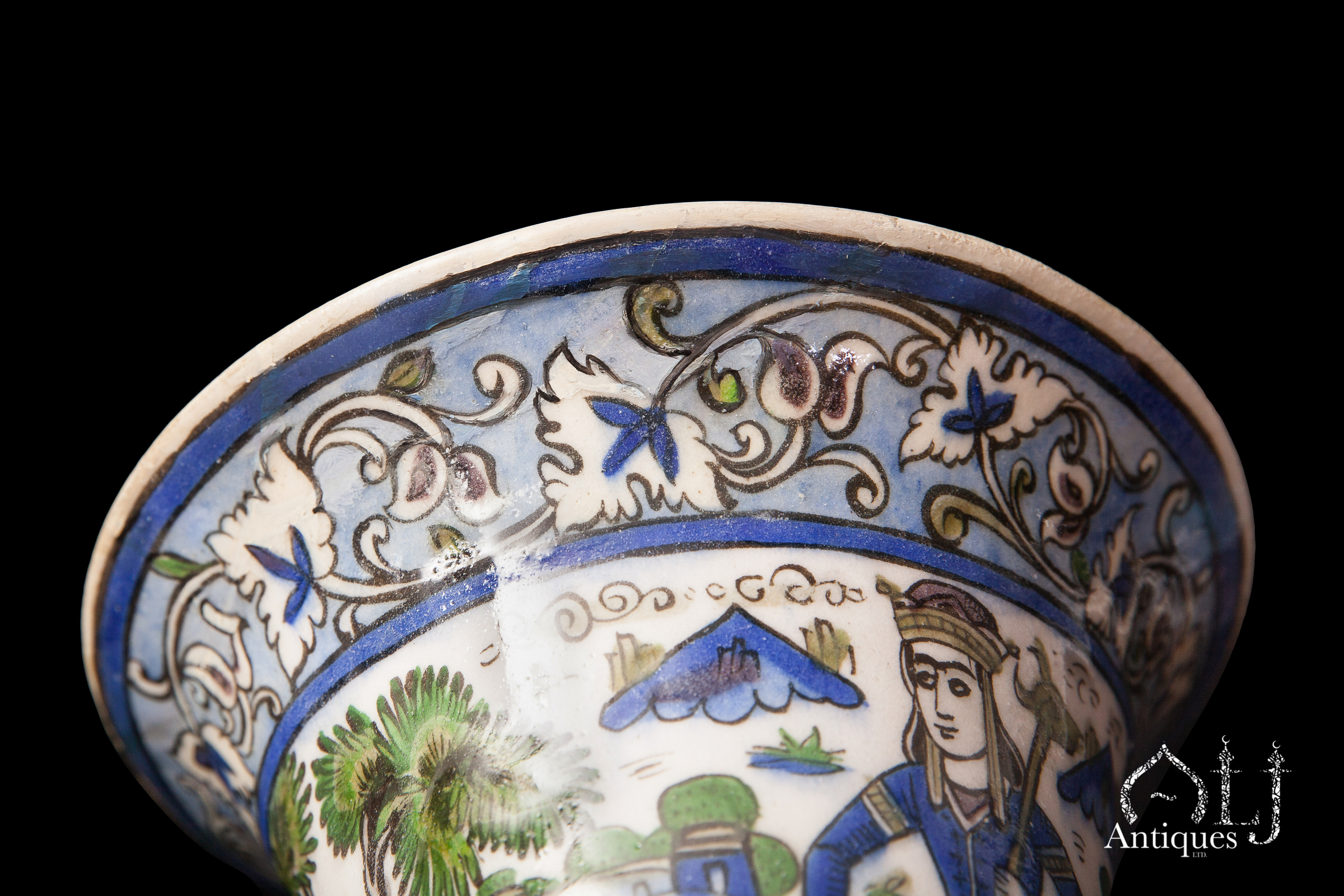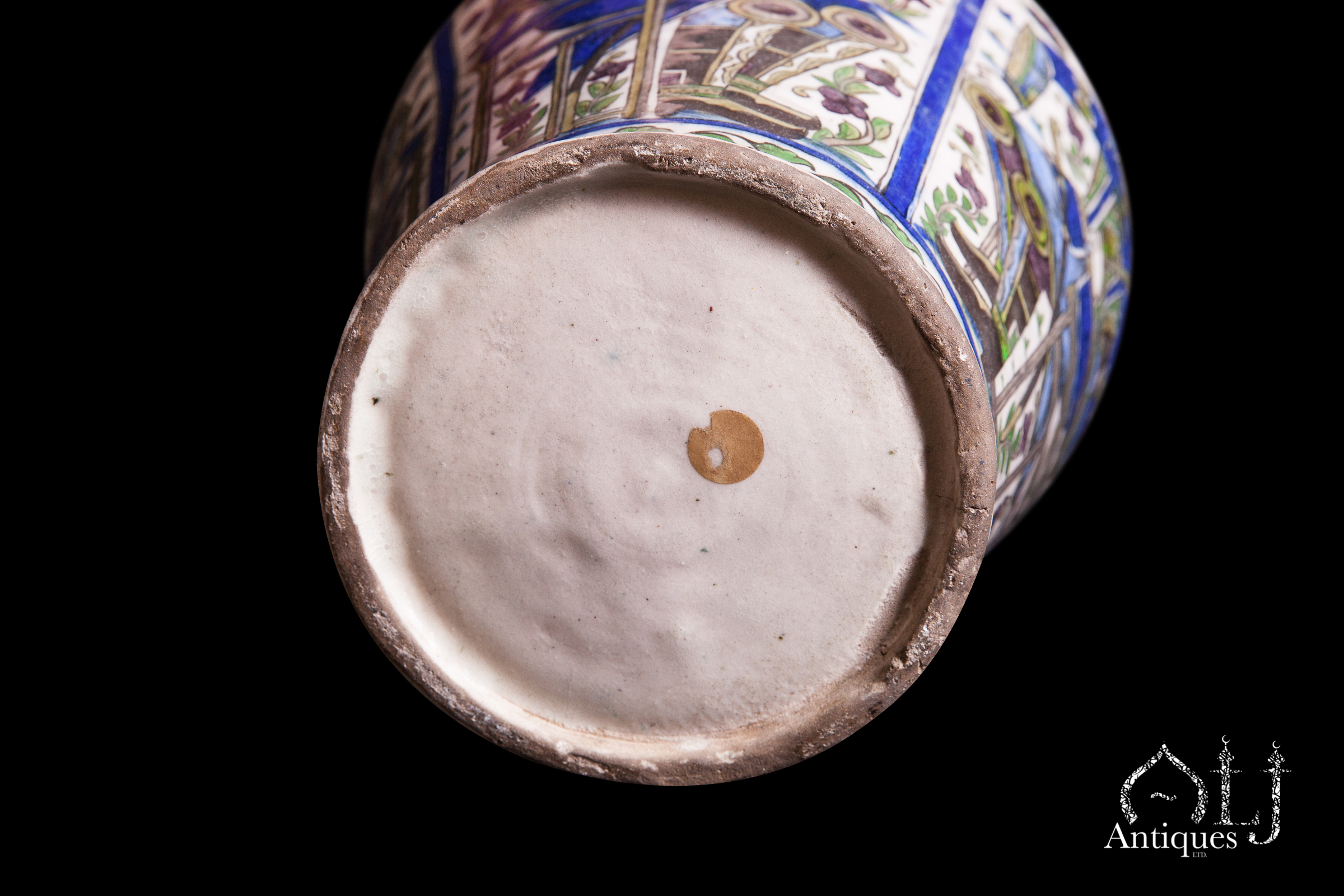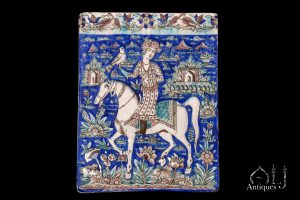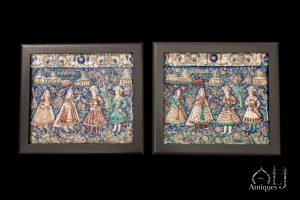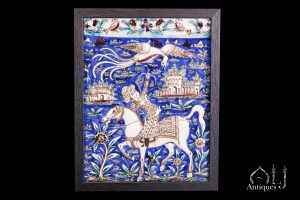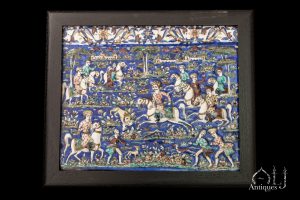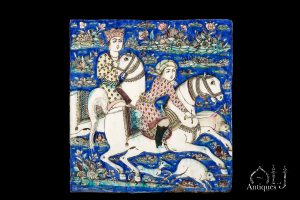Description
This larger than usual pair of finely underglaze polychrome painted fritware pottery vases which were made or most likely commissioned for a dignitary during the Qajar dynasty period in Iran are decorated with various very well-known legendary Persian heroes and for their significance and highly respected status and merit in the Persian society the heroes are being shown seated on elaborate thrones.
Undoubtedly the high quality of the drawings and finishing found on our current pair of vase are very similar to the other related and most likely commissioned group of pottery objects which were executed at the workshop of the master Ali Mohammed Isfahani with the collaboration of other artists who had worked at his workshop in Tehran, where some of their masterpieces are among the much treasured collection at the Victoria & Albert Museum in London.
The painted subject on our current lot is very powerful for it contains the depiction and images of some of the very well known legendary Persian warriors or heroes who had served under various Persian Shahs or Kings.
The depiction of the heroes in our current lot must had been based or influenced by the Shahnameh of the Firdausi, the epic stories of the Persian Kings for those heroes had great role in protecting Persia from its enemies.
The depiction of all the portraits of all the legendary seated bearded heroes are shown elegantly seated on their lavishly demonstrated thrones under a rococo style arched balcony fitted on elaborate columns, the overall view is showing some Royal monuments and beautiful gardens.
Each hero is been depicted wearing full ceremonial armory clothing or uniform including chainmail armor, chest guards, helmets some of which are designed in the form of a beast-like head mask, protective knee guards, also each champion hand is wrapped with an arm guard (bazuband).
Also each hero is been depicted carrying a shield in one hand and a ceremonial mace on the other.
Also each hero’s waist-belt is attached with a sword lying on the hero’s lap, the hero’s arm is also wrapped with an arm-band amulet and the hero is also appearing wearing long boots.
Also each hero’s image is been represented with an inscribed name located on the left hand side of each seated hero, the represented seated heroes are as follows:
1- The Persian Hero Zaal, (تصوير زال), Tazveer Zaal, translating to the Image of Zaal.
2-The Great Persian Legendary Hero Rostam Zaal (رستم زال), translating to (Rostam is the son of Zaal).
3-Zarr (it translate to from the Farsi language, as Gold).
4-The Persian Hero Goudarz or Goodarz, (كودرز), Goudars is considered to be the main Persian heroic character that is mentioned in the Persian book of the Shahnameh, (the epic of the Persian kings).
5-Another Heroic character from the Shahnameh is the Persian Legendary champion Giv or Geeve Alef Chasham (كيو الف جشم), translating to the Eye of Giv (Giv is the son of Goudarz), probably Giv is thought to have had lived during the reign of the Persian King Kaykhusro.
Also the neck of each vase is decorated with young crowned royals seated in a stylized landscape or in the surrounding palace fields.

